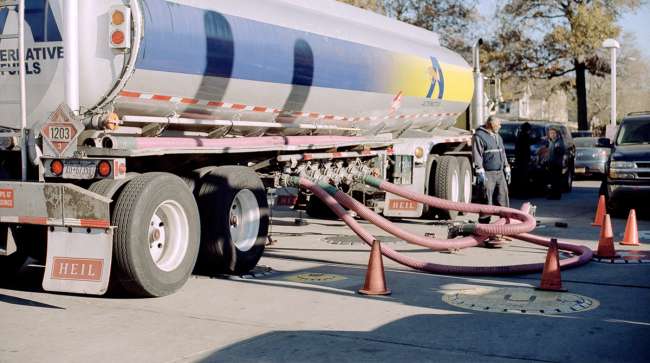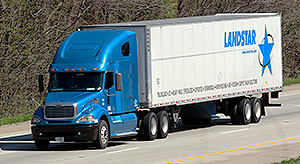Staff Reporter
Diesel Drops 0.7¢ to $3.044 a Gallon as Oil Prices Hold Steady

[Stay on top of transportation news: Get TTNews in your inbox.]
The U.S. average retail price of diesel dropped by 0.7 cent to $3.044 a gallon, the Department of Energy reported July 22.
Diesel costs 17.6 cents less than it did a year ago when it was $3.22 per gallon, DOE reported.
Regional diesel prices fell almost everywhere. The steepest declines were in the West Coast and Central Atlantic regions, where diesel prices fell 1.3 cents per gallon.
U.S. average #diesel fuel price on 7/22/2019 was $3.044/gal, DOWN 0.7¢/gallon from 7/15/19, DOWN 17.6¢/gallon from year ago https://t.co/UdjdjBCGMz #truckers #shippers #fuelprices pic.twitter.com/jzrDVxZRrh — EIA (@EIAgov) July 23, 2019
Only the Rocky Mountain region saw an increase, of 0.3 cent per gallon.
Diesel remained the highest in California at $3.939 per gallon. It was the cheapest in the Gulf Coast at $2.804 per gallon.
Meanwhile, the price of gasoline fell 2.9 cents and now costs $2.75 a gallon on average.
U.S. average price for regular-grade #gasoline on 7/22/2019 was $2.750/gal, DOWN 2.9¢/gallon from 7/15/19, DOWN 8.1¢/gallon from year ago https://t.co/rbAA9gPjHu #gasprices pic.twitter.com/4JrBMb9oUg — EIA (@EIAgov) July 23, 2019
But crude rose to slightly more than $56 a barrel during trading of West Texas Intermediate July 24 at the New York Mercantile Exchange.
One reason for the rally was the decline in oil inventories.
The DOE’s Energy Information Administration reported July 24 that U.S. crude oil inventories fell by 10.8 million barrels.
EIA said domestic oil inventories slipped for a sixth straight week, the longest contraction since January 2018, according to Bloomberg News. Production from American fields slid the most since October 2017. Gasoline inventories also declined.
Crude prices were already on track for their fourth straight daily gain July 24 as an industry tally signaled tightening supplies and an announcement that the U.S. and China would resume talks in a bid to end a trade war that has raised concerns over demand, according to Bloomberg.
But oil didn’t advance further as the outlook for energy demand was questionable, with the International Monetary Fund cutting its global growth projections and warning that policy “missteps” on global trade and Brexit could derail a rebound, Bloomberg reported.
But one analyst told Transport Topics that oil will rally through July and into August.
“I think (oil) will edge higher,” said Phil Flynn, a senior energy analyst at The Price Futures Group. “I think the economy will improve more than people think. I think earnings will be better than people expected.”
The stronger U.S. economic picture that Flynn envisions is likely to cause oil to be more in demand. Another price factor could be Iran, which has seized oil tankers near the Strait of Hormuz in the Middle East. But for now, President Donald Trump has had a measured response to Iran’s provocations, Flynn said, and that has assured markets.
Despite lower and steady diesel prices, Iran and other factors could cause diesel to jump up, so trucking companies still keep a sharp eye out for savings at all times.

Landstar offers drivers a fuel card. (John Sommers II for Transport Topics)
Rocco Davanzo, executive vice president for capacity development for Landstar Transportation Logistics, said the Jacksonville, Fla.-based company has 10,500 trucks, although it does not own a fleet. Rather, the truckload-and-logistics company manages owner-operators.
To make sure the drivers are happy with Landstar, the company offers a mobile application and fuel cards to drivers. The application informs drivers where they can get the best deals and even helps them manage their fuel taxes.
Davanzo told TT that the application shows drivers their net costs, minus state taxes on fuel, so they can get the best idea of what they are spending. Landstar’s drivers buy 2 million gallons of diesel a week, Davanzo said. Landstar’s application and fuel cards saved drivers $45 million in 2018, he said.
But the savings help the drivers, not the company’s bottom line. Davanzo said the effort by Landstar is worth it, in terms of morale, recruitment and the expansion of its business.
“It helps us develop our capacity base,” said Davanzo.
Landstar also instructs drivers on best fuel practices, including proper speed, best upgrades for equipment, and aerodynamics, he said.




